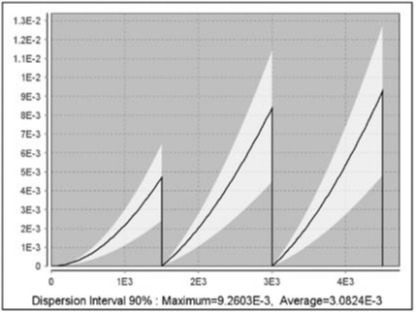GRIF | Reseda - Assessing the Reliability/Availability of networks
About the Reseda module

The Reseda module is designed to assess the availability and reliability of all kinds of networks.
Reseda creates reliability networks, made up of nodes and links. This module is suitable for use with any kind of network: electrical, radio, fluid, IT, etc. The aim is to evaluate network failure, assuming failure is the loss of any path between the input and output.
Reseda is based on ALBIZIA, the Binary Decision Diagram (BDD) calculation engine developed by TotalEnergies, which can perform precise analytical calculations and rapidly produce extensive information on the system being studied.
Benefits of the Reseda module
Easy to use, with
customizable information
Efficient, accurate
calculations (ALBIZIA)
+ 20 probability
law distributions

GRIF is designed for any field of activity
Whether for an oil platform, aircraft, train or water supply system, GRIF evaluates the reliability and availability of any system using a range of computational techniques. The GRIF software suite offers a wide variety of calculation methods so that users can select the most appropriate (analytical, simulation, etc.), according to the system being modeled.
Minimum System Requirements
- Hardware requirement: Intel Core i3 or faster, 4 GB of free RAM, 1 GB of free space, no internet connection needed;
- Software requirements: Windows 10/11 or Linux or MacOS X with Java 11;
- Licences: standalone with USB dongle or floating licences with Sentinel server;
- Trial version available on our website.
Need more information?
About the GRIF Boolean package

Boolean logic at the touch of a button for your reliability and safety calculations.
The Boolean package is used to perform calculations on static models in order to analyze safety systems and conduct hazard studies. It is composed of 7 modules: BFiab, Tree, ETree, SIL, Risk, Reseda and Bool. They are all equipped with ALBIZIA, the calculation engine developed by TotalEnergies to perform precise analytical calculations and rapidly produce a large amount of information on the system being assessed.
About GRIF

Identify the essential indicators of your system analysis.
GRIF (GRaphical Interface for Reliability Forecasting) is a software suite designed to help engineers determine the key RAMS (Reliability - Availability - Maintainability - Safety) indicators. Drawing on TotalEnergies' experience in simulation research and development, it features mature, high-performance calculation engines and modeling capabilities to meet all your needs in any reliability study.

